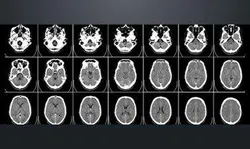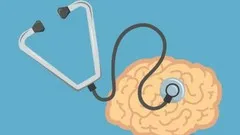
Learning and memory in the brain: a guide for teachers 
This course provides an overview of the brain's learning and memory processes. It examines the changes that occur on a cellular level when new information is acquired or stored as a memory. Drawing on research from neuroscience and psychology, the course explores the process of storing long-term memories and the role of the brain in learning. ▼
ADVERTISEMENT
Course Feature
![]() Cost:
Cost:
Free
![]() Provider:
Provider:
Edx
![]() Certificate:
Certificate:
Paid Certification
![]() Language:
Language:
English
![]() Start Date:
Start Date:
Self paced
Course Overview
❗The content presented here is sourced directly from Edx platform. For comprehensive course details, including enrollment information, simply click on the 'Go to class' link on our website.
Updated in [March 06th, 2023]
This course provides education assistants with a guided tour through the brain, exploring the changes that occur on a cellular level when we learn new information or store a memory. Using research from neuroscience and psychology, the course will look at the process of storing long-term memories, and how to help students do this effectively.
The course will also examine the way the brain changes from birth to adulthood, and how these affect the way we learn and remember information. It will explore how teaching to a child’s developmental stage can benefit students and teachers. Additionally, the course will dive into neurodiversity in the classroom, covering the current understanding of autism, dyslexia, ADHD and other cognitive differences, and how best to support these pupils.
Throughout the course, participants will discuss how to apply this learning to their own classroom, and what the evidence says about the best ways to teach. By understanding more about the way memories are stored and recalled, participants can explore different ways to support their students to learn efficiently, so the memories last a lifetime, not just until the exam.
[Applications]
Suggestions for applying the course include: incorporating teaching strategies that are tailored to the developmental stage of the student; creating an inclusive classroom environment that is supportive of neurodiversity; and using evidence-based teaching methods to help students learn and remember information more effectively. Additionally, teachers can use the course to explore different ways to support their students in learning efficiently, so that the memories last a lifetime.
[Career Paths]
1. Educational Psychologist: Educational psychologists are responsible for helping students understand their learning styles and develop strategies to improve their academic performance. They also work with teachers to create effective learning environments and provide support for students with special needs. Educational psychologists are in high demand as schools and universities strive to create more inclusive learning environments.
2. Instructional Designer: Instructional designers create educational materials and programs for students of all ages. They use a variety of methods, such as multimedia, simulations, and online learning, to create engaging and effective learning experiences. Instructional designers must be knowledgeable about the latest technologies and trends in education, and be able to create materials that are tailored to the needs of their students.
3. Learning and Development Manager: Learning and development managers are responsible for creating and implementing training programs for employees. They must be knowledgeable about the latest trends in learning and development, and be able to create programs that are tailored to the needs of their organization. They must also be able to evaluate the effectiveness of the programs and make changes as needed.
4. Educational Technology Specialist: Educational technology specialists are responsible for developing and implementing technology-based learning solutions. They must be knowledgeable about the latest technologies and trends in education, and be able to create solutions that are tailored to the needs of their students. They must also be able to evaluate the effectiveness of the solutions and make changes as needed.
[Education Paths]
1. Neuroscience: Neuroscience is a field of study that focuses on the structure and function of the nervous system. It is an interdisciplinary field that combines biology, psychology, and medicine to understand how the brain works. Neuroscience degree programs typically include courses in anatomy, physiology, pharmacology, and psychology. Developing trends in neuroscience include the use of artificial intelligence and machine learning to better understand the brain and its functions.
2. Cognitive Science: Cognitive science is the study of the mind and how it works. It is an interdisciplinary field that combines psychology, computer science, linguistics, and philosophy to understand how the mind works. Cognitive science degree programs typically include courses in psychology, computer science, linguistics, and philosophy. Developing trends in cognitive science include the use of artificial intelligence and machine learning to better understand the mind and its functions.
3. Educational Psychology: Educational psychology is the study of how people learn and how to best facilitate learning. It is an interdisciplinary field that combines psychology, education, and sociology to understand how people learn. Educational psychology degree programs typically include courses in psychology, education, and sociology. Developing trends in educational psychology include the use of technology to better understand how people learn and how to best facilitate learning.
4. Educational Technology: Educational technology is the use of technology to facilitate learning. It is an interdisciplinary field that combines technology, education, and psychology to understand how technology can be used to facilitate learning. Educational technology degree programs typically include courses in technology, education, and psychology. Developing trends in educational technology include the use of artificial intelligence and machine learning to better understand how technology can be used to facilitate learning.
Course Provider

Provider Edx's Stats at AZClass
Learning and memory in the brain: a guide for teachers gives an overview of the brain's learning and memory processes. It examines changes at the cell level as new information is fetched or stored as memory. Drawing on research in neuroscience and psychology, the course explores the process of storing long-term memories and the brain's role in learning. This course provides a guided tour of the brain, looking at the changes that occur at the cellular level when they learn new information or store memories. Using research in neuroscience and psychology, they will examine the process of storing long-term memory and how to help students do so effectively.
Discussion and Reviews
0.0 (Based on 0 reviews)
Explore Similar Online Courses

The Bits and Bytes of Computer Networking

A Million Subs In A Year: YouTube Marketing and YouTube SEO

Python for Informatics: Exploring Information

Social Network Analysis

Introduction to Systematic Review and Meta-Analysis

The Analytics Edge

DCO042 - Python For Informatics

Causal Diagrams: Draw Your Assumptions Before Your Conclusions

Whole genome sequencing of bacterial genomes - tools and applications

Control Your Subconscious Mind: Neuroscience Hidden Secrets

Perform an Excellent Neurological Bedside Exam


Start your review of Learning and memory in the brain: a guide for teachers